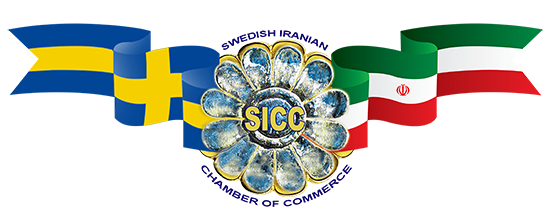The Swedish Iranian Chamber of Commerce (SICC) has developed into one of the world’s leading forums for resolution, the Swedish Iranian Chamber of Commerce (SICC) was established in 2004. based on the concerns of the weak business and trade relations between Sweden and Iran.
The total amount of trade between Sweden and Iran was much lower than what it could and should be, and they have since then decreased even more due to difficulties in making business such as sanctions, cultural differences, and market conditions.
The founders of the SICC also wished to improve the general business climate and relations between the two regions and help companies overcome the different barriers such as language-related, cultural, industrial structures, and payments.
The idea was to provide support to companies through courses and seminars, industry delegations, coaching and consulting, market studies, and distributor searches as well as networking and cultural exchange, among other things.
The SICC goals are to:
- Help investors and commercial companies gain valuable new contacts in both the private and governmental sectors.
- Provide (through the means of meetings, seminars, etc) a creative atmosphere where companies can exchange contacts and experiences.
- Help establish contacts between different parties of interest such as the corresponding Chambers of Commerce in Iran and other companies and institutes in order to provide counseling and networking.
- Through the means of courses and coaching sessions with both theoretical and practical elements introduce companies and organizations to the business culture and governmental regulations in Iran to help ensure successful business endeavors.
- Arrange business and study- visits and delegations to and from Iran in order to provide for means of on-site networking, marketing, and prospecting.
- Publish studies, analyses, and assessments related to trade and business with and in Iran.
- Publishing useful contact information regarding companies, organizations, and governmental institutions for members of the SICC to use.
- Utilizing the Internet in order to provide the above-mentioned information as to membership services.
- Secure funds through other means of income such as fees and consulting to ensure a financial ground for further development and increased service level.
Future
The future of the SICC is more than bright considering the fact that many companies have expressed their wishes to invest in, and export to Iran, in the light of the post-sanction period coming after the agreement between Iran and the West.
With the help of on-site sibling organizations, the SICC has set plans to help bridge the gap between Sweden and Iran which will both help bolster the economy of both parts as well as helping the people in Iran through the creation of new job opportunities.
Reza Khelili Dylami

Export of services based on business partners:
EU members make up about 52% of Sweden’s trade in services, down 8.2%. The United States, Norway and the United Kingdom were among the countries that received the most exports of Swedish services. At the same time, the largest decrease in services exports to Norway took place, which decreased by about 11 billion kronor, or 27%.

Import of services based on business partners:
Imports of services from the EU account for 64% of total services imports. The United States, the United Kingdom, and Germany account for the largest exports of services to Sweden. Imports of services from the United States increased to SEK 6.4 billion (15% increase). Denmark also saw the largest decline in service imports (SEK 6.4 billion, down 26%).
Energy
The Energy section promotes knowledge transfer and trade within the energy sector between Sweden and Iran. Events are established to further knowledge and conversation around renewable and non-renewable resources alike.
Diversity & Inclusion
Advice within this section assists in the business development of organisations from Sweden and Iran, including advice for start-ups wishing to trade and invest in Sweden and Iran.
Creative Industries
This section shines a spotlight on opportunities in Iran hugely diverse creative industries including for example: Food stuffs, petrochemical products, Packaged product, Handicrafts and etc.
Technology
From topics as varied as GDPR, Big Data, IoT, automation, quantum computing, and artificial intelligence, the Technology section attempts to showcase and share current best practice, breakthrough technologies, trends and challenges in this sector.
Statistical data
Sweden’s foreign trade in the first six months of 2020, compared to the previous year, had a relatively sharp decline in both goods and services, mainly due to the outbreak of the corona. At the same time, trade orientations have changed in some commodity groups as well as trading partner regions. For example, exports of pharmaceutical products increased both within the EU and outside the EU. Imports of services from the United States and exports of goods to China also grew during this period.
Trade services
The value of exports in the service sector in the first half of 2020 reached 312 billion kroner and imports of services reached 315 billion kronor, which compared to the same period last year, exports of services decreased by 7.4 percent and imports of services by 8.5 percent. Exports of services are mainly in the field of information and communication technology, transportation, intellectual property rights and other parts of commercial services.

Direct investment
The outflow of Swedish direct investment abroad increased from SEK 185 billion to SEK 245 billion. The inflow of foreign direct investment into Sweden has also increased from SEK 131 billion to SEK 192 billion.
Small businesses and the Swedish labor market
According to a report published by the Swedish National Trade Board, the country's foreign trade indicators for the first six months of 2020 are as follows:
Import and export of goods
Exports of goods in the first six months of 2020 reached 718 billion kronor (about 72 billion euros), which shows a decrease of 4.0% in weight and 6.6% in value compared to the same period last year. Imports of goods also reached 976 billion kronor (97 billion euros), which decreased by 7.1 percent in weight and 9.8 percent in value.
Exports by commodity groups
Exports of commodity groups to different regions vary. But exports of chemical products have almost doubled in both weight and value, with exports of pharmaceuticals accounting for the bulk of the increase. Exports of pharmaceutical products increased both within the EU and outside the EU. But the biggest decline in exports has been in the commodity group of energy products.Exports of goods based on business partner areas
According to these statistics, Europe accounts for 71% of Swedish exports, with a share of about 56% in the 28 EU member states. Exports to Asia increased (8.4%) but exports to other regions decreased. The largest decrease was in the Oceania region (-19%), followed by the European Union (-10%), Africa (-9.5%), other European regions (-5.5%) and the United States (-1.9%). The increase in exports to Asia was mainly to China, compared to the same period last year It increased by about 13 percent to about 42 billion kronor. Asia is also the second largest export destination in the country. At the same time, about 84% of Sweden’s imports come from Europe. But exports to Germany, one of Sweden’s main trading partners in the European Union, fell sharply. Trade with the United Kingdom also declined during this period.
Import of goods based on business partner areas
About 84% of Sweden’s imports come from Europe, with the EU accounting for about 71%. Imports other than the United States (which grew by about 0.3 percent) from other regions showed a decline. The largest declines were in Africa (-61%), followed by Oceania (-12%), the European Union (-9.3%) and Asia (-7.9%).
Imports by commodity groups
Imports of mineral and energy products with a decrease of 9.8 percent had the largest share in reducing imports in terms of value. In terms of volume, mineral products and workshop products had the largest share in reducing imports. Imports of corona-related protective equipment from outside the EU grew by about 32%.
